How SAFR maintains accuracy in the age of COVID-19
By Eric Hess
Senior Director of Product Management for Face Recognition & Security Solutions
As we continue to adjust to social distancing mandates, more experts are now recommending wearing face masks as another way to limit the spread of COVID-19. In situations and environments where SAFR face recognition is vital for security and secure access, face masks don’t negate its benefits.
It’s true that the more facial features available as data points, the greater the chance of an accurate match. However, a resilient algorithm can adapt when it sees a face obscured or partially covered — occluded — and can still deliver excellent results.
Occlusion detection has been a feature of the SAFR platform for some time — we’ve worked hard to make it work well. As preventative masks become more common around the globe, accurate recognition of partially occluded faces is more important than ever. To address this need, we’re enhancing our occlusion logic even further to ensure we can maintain the highest accuracy and best performance under challenging conditions.
A mask is just one way a face can be occluded. When any portion of the face is not visible, a facial recognition algorithm must focus on whatever face landmarks it can see in order to determine an accurate match. It’s a process that requires training and tuning to get right. When deployed commercially, accurate recognition under occluded conditions is valuable and in some cases life-saving:
- Healthcare workers can move through secured areas without removing personal protective equipment.
- Essential service providers can continue to deliver products and services without delay.
- Security threats will not go unrecognized, and responses will not be delayed.
SAFR evaluates occlusion on a variety of levels, and sometimes the level is such that an exact match can’t be made. In these cases, SAFR can automate subsequent procedures that ensure safety and security protocols are upheld. For example, different matching thresholds can be required when occlusions are detected, a multifactor authentication workflow can be initiated, or security personnel can be notified when a person is not recognized because of a face mask or other occlusion.
In this moment, many vendors are excitedly sharing news that they are “mask immune” — able to recognize faces with the same accuracy as when people are not wearing masks. That may be true when their sample size is small. But what we know about human faces is that they are all different, and as your sample size (enrolled database) grows, the range of represented facial traits and likelihood that someone with somewhat similar-looking features will appear in the database increases. Some faces have especially unique traits around the eyes or nose, while others may have more unique mouths or jawlines. Therefore, some people will be more easily recognized when the upper half of their face is visible, and others when the lower half is available for analysis. Because of this, not all people may experience the same level of accuracy even when they are occluded by similar objects.
We are currently emphasizing training for our algorithms to reduce the negative impact that occlusions such as face masks have on accuracy. But you can take advantage of one feature in SAFR right now to improve accuracy when the outward appearance of a person changes significantly — Grouping in the Person Directory. Refer to the SAFR documentation under “Manage People in the Person Directory” for directions.
Yes, we too can match faces when people are wearing masks, but we feel a responsibility to be honest about the limitations, and even better performance can be achieved when SAFR understands how a person may appear when wearing a mask.
Accuracy is always a complex topic, as multiple variables are involved: the quality of the enrolled face image, the degree to which a subject cooperates with having a good-quality image captured, and the impact of lighting and other environmental variables. SAFR’s current capability on the University of Massachusetts Labeled Faces in the Wild (LFW) dataset is a 99.87% True Identification Rate with just 1:1,000,000 False Identifications (false positives). Internal benchmarking shows that when subjects present themselves in cooperative identification scenarios, such as in an Access Control use case, and both the subject and one of their enrolled face images are wearing masks, the true positive identification rate is 93.5%, with less than 1:3,760 false identifications. While this is an excellent level of accuracy considering 50% to 60% of the face is covered, at SAFR we plan to improve this capability even further.
Our goal now, as it has always been, is to equip our end users with high-performance software and systems powered by intelligence that adapt to rapidly changing environments and evolving needs. It’s a reality we’re becoming all too familiar with in this time of crisis. We hope SAFR can help.
For more information — or to get a demonstration of occlusion detection and other features of the SAFR platform — drop us a note.
Be safe.
